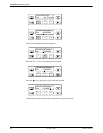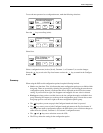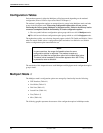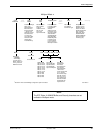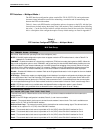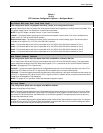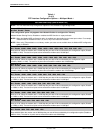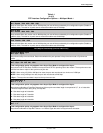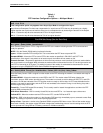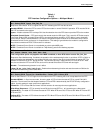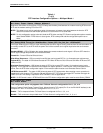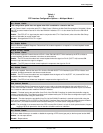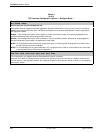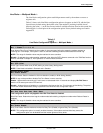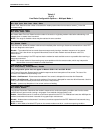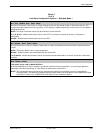
COMSPHERE 392xPlus Modems
4-14 November 1996 3920-A2-GN31-30
Table 4-1
(5 of 9)
DTE Interface Configuration Options — Multiport Mode l
Async OverSpeed: 1.0 %
End 1.0 % 2.3 %
This configuration option only appears when Async/Sync Mode is configured for Async.
Asynchronous Overspeed. Provides rate compensation for asynchronous DTEs that may be operating at a slightly
higher rate than the asynchronous interface of the port. It accomplishes this by shortening the duration of the stop bit.
1.0 % – Causes the stop bit to be shortened to 87.5% of its original duration.
2.3 % – Causes the stop bit to be shortened to 75% of its original duration.
Port EIA Sub-Group (One for Each Port)
DTR Action: Ignore
Nxt Ignore Stndrd_RS232 CntrlsOnHook
Data Terminal Ready Action. DTR is a signal from the DTE to the modem indicating that the DTE is connected and
ready for operation.
NOTE: Only the Stndrd_RS232 setting is allowed in Austria.
Ignore – Modem assumes DTR is always ON. This is used when the DTE does not provide DTR.
Standard RS232 – Allows the DTE to control DTR to the modem as specified in EIA-232-D and CCITT V.24
specifications. If this signal is not present on at least one port, the modem will not answer or dial.
Controls On-Hook – Required for applications in which the host processor must reset itself for the next session before
the current session is terminated. When selected, the modem does not disconnect from the VF line during an active call
until DTR is lowered by all DTE ports. This setting is ignored if the modem is commanded to disconnect from its own
front panel or by the COMSPHERE 6700 Series Network Management System.
DSR Control: Stndrd_RS232
Nxt Stndrd_RS232 Forced_On WinkWhenDisc Follows_DTR On_Early Delay_ToData
Data Set Ready Control. DSR is a signal from the modem to the DTE indicating the modem is connected and ready for
operation.
Standard RS232 – Allows the modem to control DSR to the DTE. The modem raises DSR when it begins the
handshake process. DSR lowers upon disconnect. The modem is not ready to receive data until DSR, CTS, and LSD
are active. An ON state indicates to the DTE that the modem is ready to receive data. An OFF state indicates that the
modem is not ready to receive data, and the DTE will not send data to the modem. During a Local Analog Loop and a
Remote Digital Loop, DSR is ON.
Forced On – Forces DSR output ON constantly. This is usually used for leased-line applications and when the DTE
requires DSR to always be ON.
Wink When Disconnect – DSR is normally forced ON, but is turned OFF for 1 to 2 seconds upon a disconnect.
Follows DTR – When the modem receives DTR from the DTE, it sends DSR to the DTE.
On Early – DSR is low when the modem is in the idle state. DSR goes high immediately upon a command to enter Data
mode. This setting is required for some modem pooling applications.
Delay to Data – Operation is similar to the Standard RS232 except that DSR does not turn ON until the modem enters
Data mode. Normally, the modem raises DSR when it begins the handshaking process. Use this setting when the DTE
cannot operate with a long DSR-to-CTS delay (common for V.32bis modulation).



